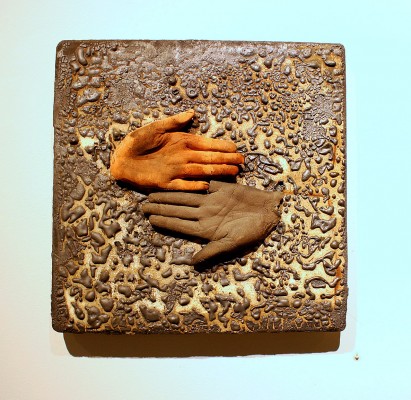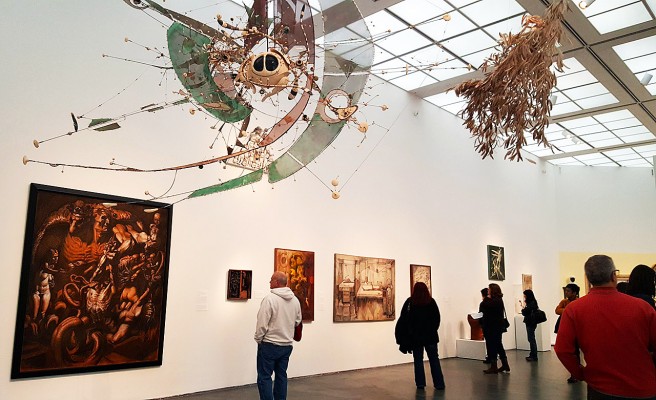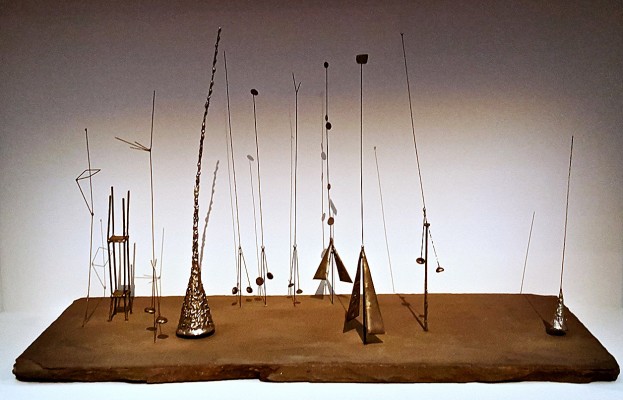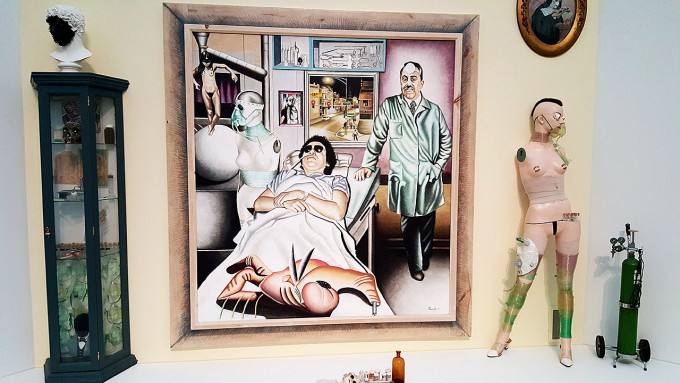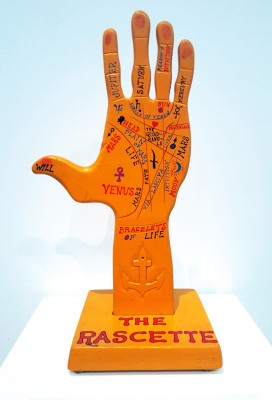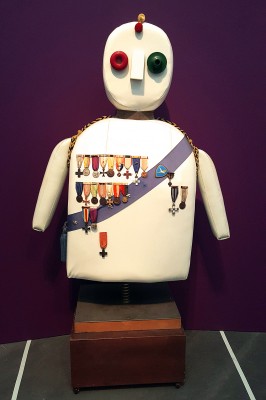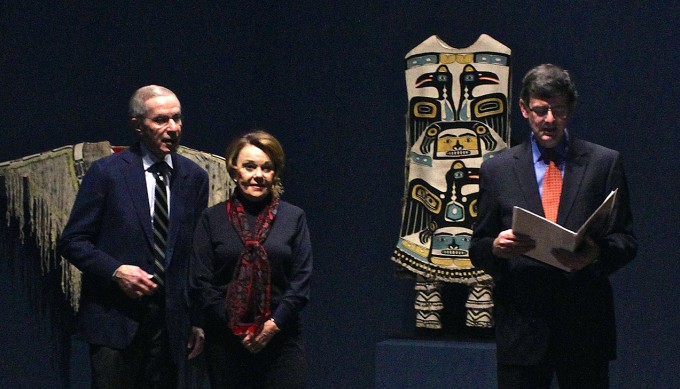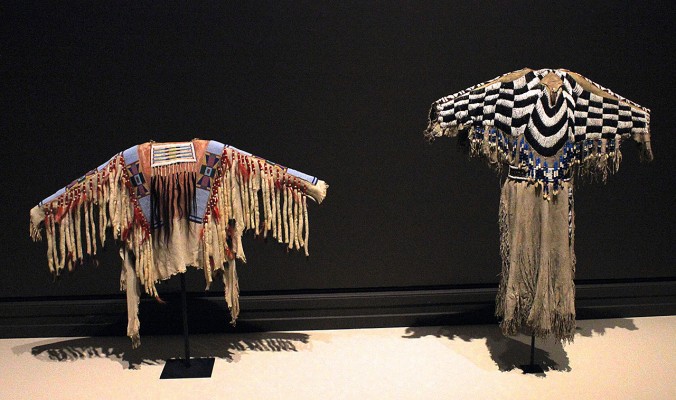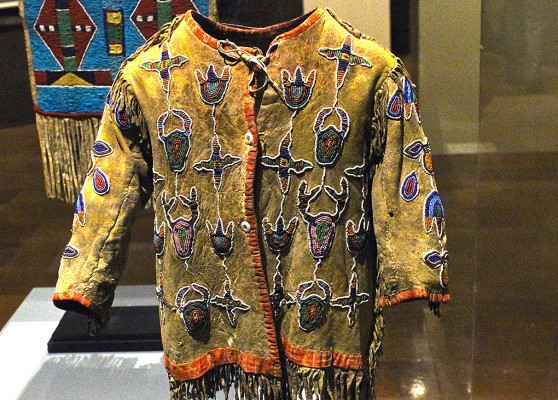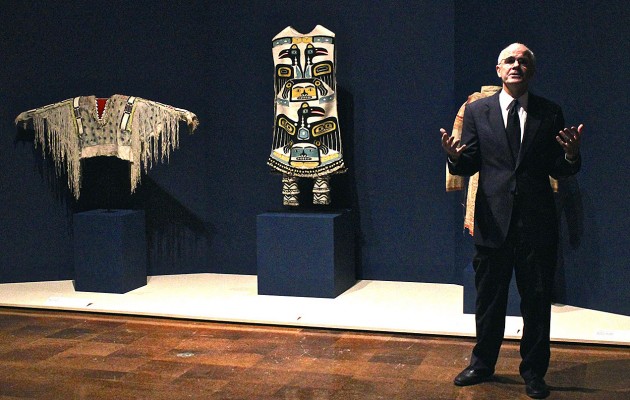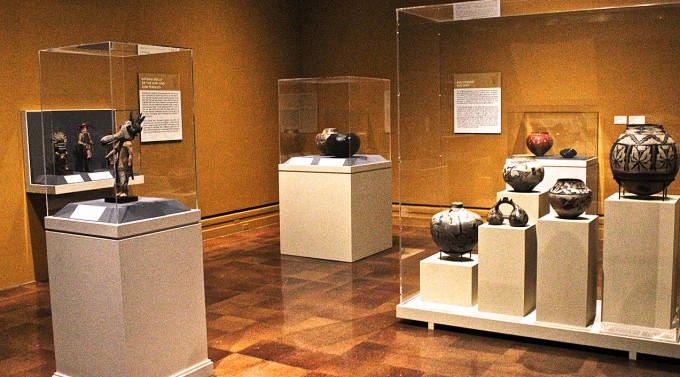The Clay Menagerie: The Life and Work of Marie Woo
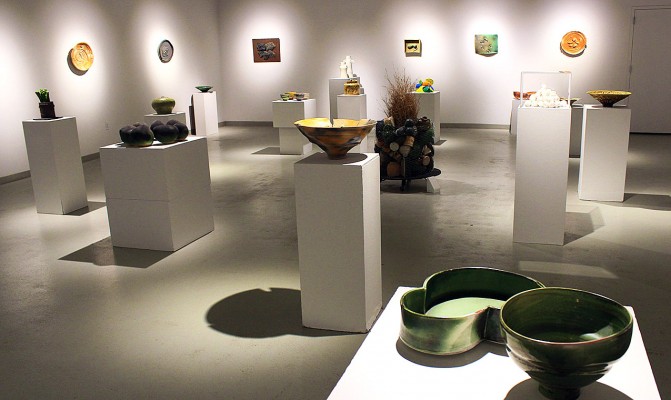
There are funny shapes and objects all over Clay Odyssey: A Retrospective, a survey of work at the Birmingham Bloomfield Art Center by ceramicist Marie Woo, spanning a 60-year career that has always aspired to push ceramics past function and into experimental realms. There is not a symmetrical form among the 50+ works on display. There are stacks of thin, rigid forms, peaked like high hats from drum kits, rendered in matte clay and punctuated with little nubbins. There are collections of forms that look like hot stones under dilapidated and rusting wire enclosures—like the contents of a charcoal pit, or the steam-producing unit in a sauna. A delicate branch suspends a collection of azure clay beads on lengths of wire in a static, freeform arrangement that resembles a frozen rainstorm. Inside a rectangle of glass sits a loose pyramid of lumpen white balls. Irregular wall pieces suggest nests containing clutches of dinosaur eggs. The majority of pieces are finished in chalky, matte glazes that give the room a sense of antiquity. Everywhere are shapes of prehistory, primordial roots.
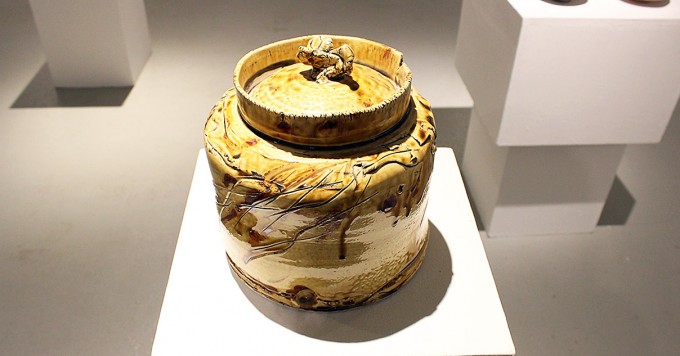
There is great intentionality in the way that Woo has slashed and broken her forms – even those resembling traditional vessels have scarred-over cuts along their exterior surfaces, strategic tears and gouges, or oddly pinched handles on the lids of pots. Based on Woo’s background, studying under famed ceramic artist Maja Grotell, founder of the ceramics program Cranbrook Academy of Arts—as well as her subsequent involvement in the experimental ceramics collective, the Clay Ten, and her fervid dedication to researching and preserving the traditions of Chinese folk pottery, that Woo understands how to make a flawless form. The question then becomes, why does she so categorically refuse to do so?
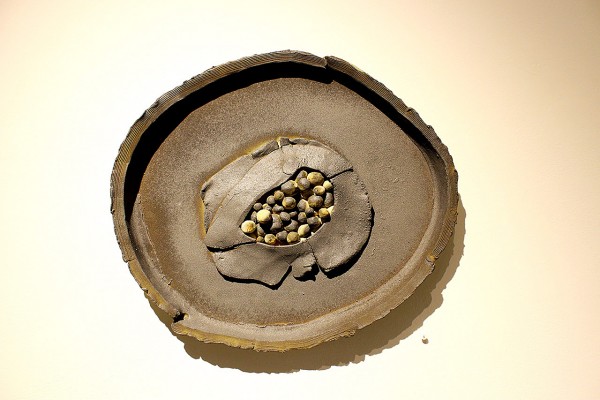
Perfectionism can be a real mind trap. Training on the pottery wheel demands precision, symmetry, replicability of form. And yet, in a world where perfect bowls, mugs, and plates can be created by machine and readily purchased at the local Crate & Barrel, that there is little practical need for a ceramic artist to focus on making functional or “perfect” forms. Rather, Woo seems to be obsessed with the hand of the artist as a reflection of her own capacity for human error and variance—there are literal castings of (presumably) her own hands in several wall pieces. As is aptly demonstrated by the recent group show at Pewabic curated by Cranbrook’s Head of Ceramics, Anders Ruhwald, This is the Living Vessel: person. This is what matters. This is our universe , there is an opportunity to treat ceramic vessels as an expression of the individuality of their maker—of all people, as living vessels. This seems to be at play in Woo’s oeuvre.
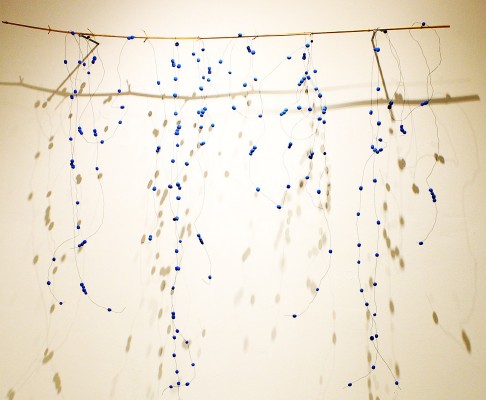
Additionally, there is an examination of the clay body that demonstrates a deep meditation on the nature of her material at its baseline. In an essay written by Dennis Nawrocki for Essay’d, Woo teases out some ideas in her most recent work, which deals with unfired clay exposed to natural elements over time, leading to the inevitable decompensation of unfixed forms. This body of work is represented in hanging triptychs of pictures that document the journey from structured clay body to regressive, melting lumps. It sees natural, in a world driven by capitalism and consumption, so replete with objects, that an artist as enamored with process and creation as Woo would find a way to focus on the making, leaving the results to unmake (or simply alter) themselves over time. Central to the exhibition is a piece that corrals dozens of fired vessels into a tube of chicken wire, which collectives forms a kind of urn holding a stand of dry grasses. The clean, formal construction of the object’s base indicates precision in its making, but it looks like nothing so much as a mass grave for discarded objects, marked with dried-out flora. Perhaps this stands as a monument to the death of ideas that need to be permanently fixed in objects—as is the case for many who reach their octogenarian years, there is a lessening interest in the material world, and more of a focus on the life of the soul, the spark within the vessel. http://bbartcenter.org
